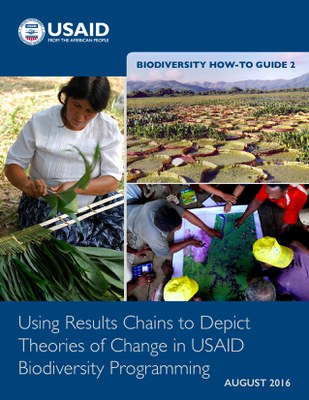Biodiversity How-To Guide 2: Using Results Chains to Depict Theories of Change in USAID Biodiversity Programming
The Biodiversity How-To Guide 2: Using Results Chains to Depict Theories of Change in USAID Biodiversity Programming is the second in a series of three guides that provide in-depth guidance on key tools and practices to support design teams as they design and manage biodiversity programs within the Program Cycle and in accordance with the USAID Biodiversity Policy. It builds off the situation model guide to help design teams clearly state the expected results and assumptions behind the proposed strategic approaches that make up the program’s theory of change. The situation model provides the foundation to identify necessary results to reduce threats; brainstorm and prioritize strategic approaches; and then develop results chains to clarify assumptions behind selected approaches.
https://biodiversitylinks.org/projects/completed-projects/measuring-impact/how-to-guides-for-usaid-biodiversity-programming/biodiversity-how-to-guide-2-using-results-chains-to-depict-theories-of-change-in-usaid-biodiversity-programming/view
https://biodiversitylinks.org/projects/completed-projects/measuring-impact/how-to-guides-for-usaid-biodiversity-programming/biodiversity-how-to-guide-2-using-results-chains-to-depict-theories-of-change-in-usaid-biodiversity-programming/@@download/image/image.jpg
File
Biodiversity How-To Guide 2: Using Results Chains to Depict Theories of Change in USAID Biodiversity Programming
The Biodiversity How-To Guide 2: Using Results Chains to Depict Theories of Change in USAID Biodiversity Programming is the second in a series of three guides that provide in-depth guidance on key tools and practices to support design teams as they design and manage biodiversity programs within the Program Cycle and in accordance with the USAID Biodiversity Policy. It builds off the situation model guide to help design teams clearly state the expected results and assumptions behind the proposed strategic approaches that make up the program’s theory of change. The situation model provides the foundation to identify necessary results to reduce threats; brainstorm and prioritize strategic approaches; and then develop results chains to clarify assumptions behind selected approaches.
An interactive version of How-To Guide 2 is also available.



